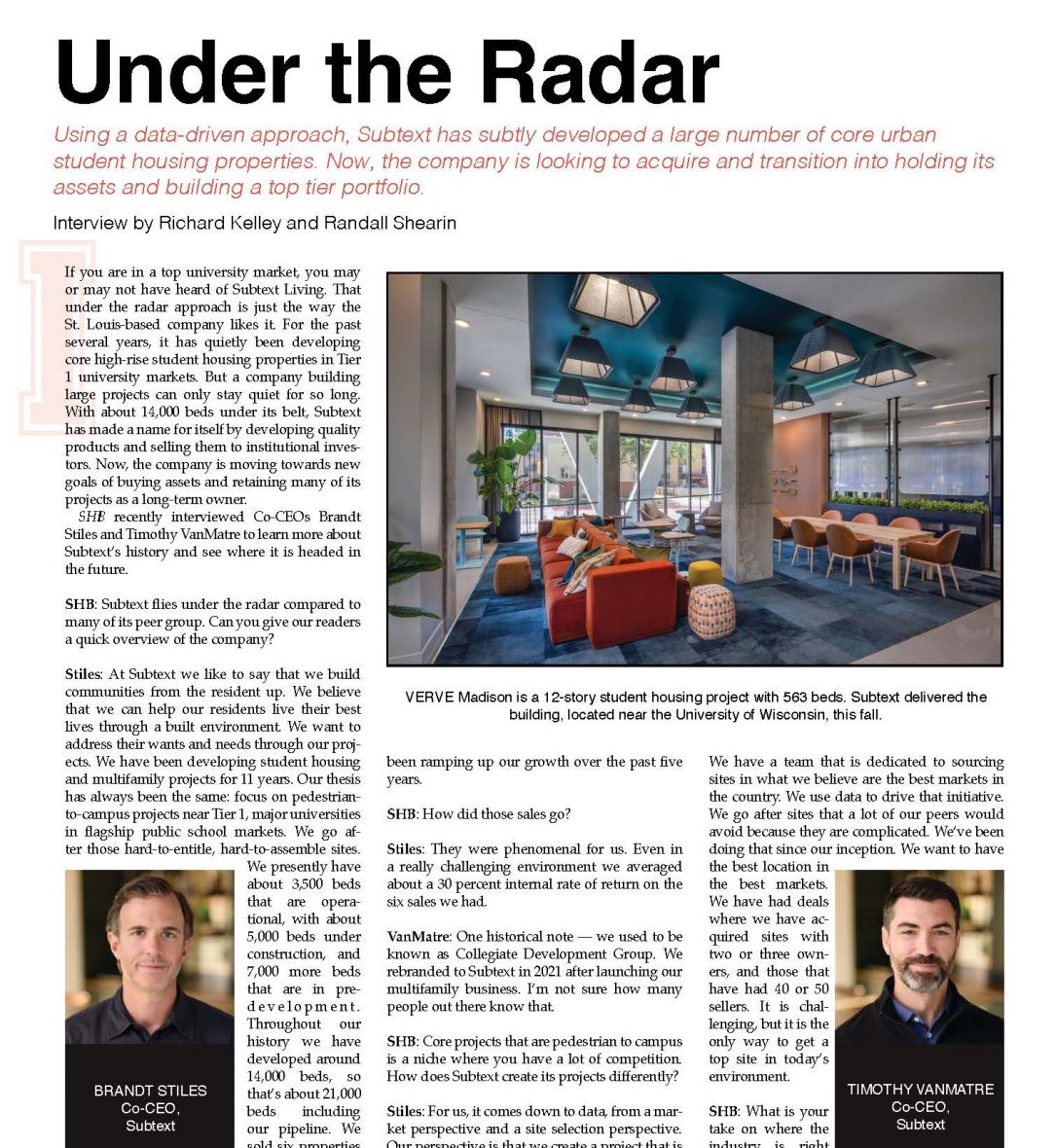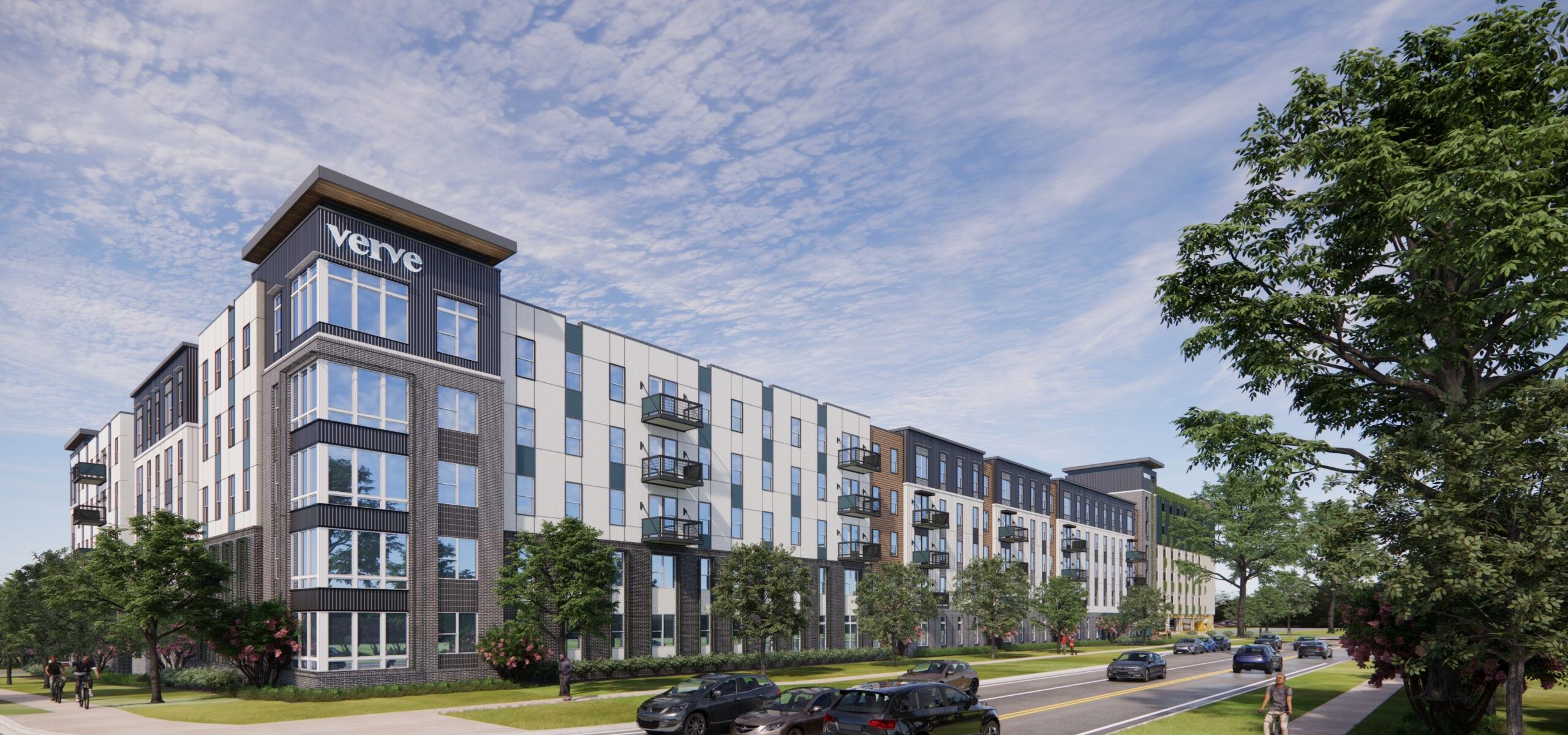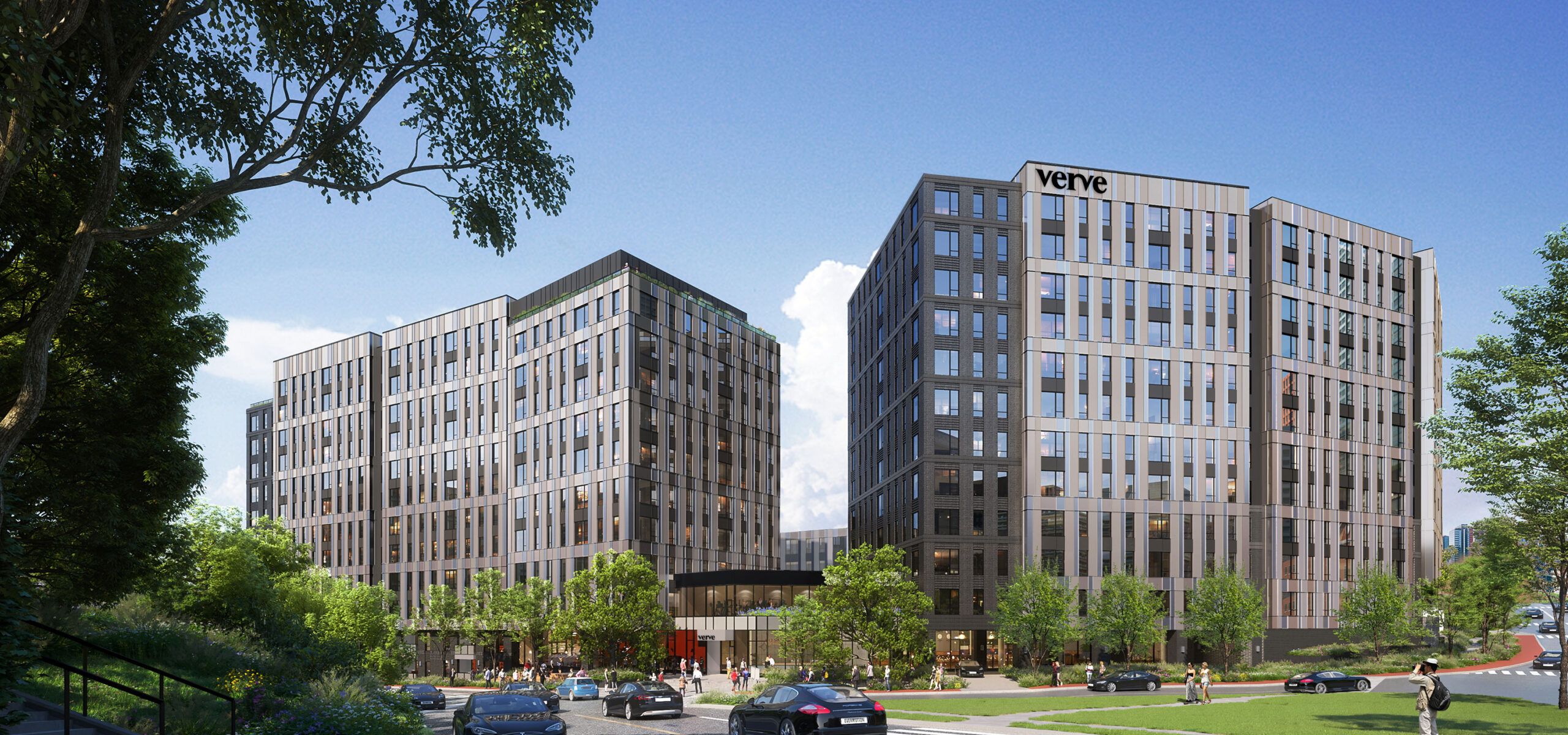Subtext co-founders Brandt Stiles and Tim VanMatre sat down with Student Housing Business to talk about where we’ve been, where we’re headed, and what sets us apart. A few excerpts are included below and the full interview can be read here.
Stiles: At Subtext, we like to say that we build communities from the resident up. We believe that we can help our residents live their best lives through a built environment. We want to address their wants and needs through our projects. We have been developing student housing and multifamily projects for 11 years. Our thesis has always been the same: focus pedestrian-to-campus projects near Tier 1, major universities; flagship public school markets. We go after those hard to entitle, hard to assemble sites. We presently have about 3,500 beds that are operational, with about 5,000 beds under construction, with 7,000 more beds that are in pre-development. Throughout our history, we have developed to-date more around 14,000 beds, so that’s about 21,000 beds including our pipeline. We sold six properties in 2023. We have been ramping our growth over the past five years.
VanMatre: One historical note: we used to be known as Collegiate Development Group. We rebranded to Subtext in 2021 after launching our multifamily business. I’m not sure how many people out there know that.
Stiles: For us, it comes down to data, from a market perspective and a site selection perspective. Our perspective is that we create a project that is better located and more intentionally designed. We have a team that is dedicated to sourcing sites in what we believe are the best markets in the country. We use data to drive that initiative. We go after sites that a lot of our peers would avoid because they are complicated. We’ve been doing that since our inception. We want to have the best location in the best markets. We have had deals where we have acquired sites with two or three owners, and those that have had 40 or 50 sellers. It is challenging, but it is the only way to get a top site in today’s environment.
VanMatre: We spend a tremendous amount of time with data. Our development process is oriented around data. We have a data scientist on staff to help manage all the data available to us and to convey that data to our various departments. At every step of the way in the development process, we are asking the question ‘why?’ and we are letting the data give us the answers. We use external data and our own data from past projects and create models based on that knowledge. This helps us on every decision, from location to what our design should look like to what students are using in our projects. The key for us is to continue improving the amount of data we have as well as sources and use.






